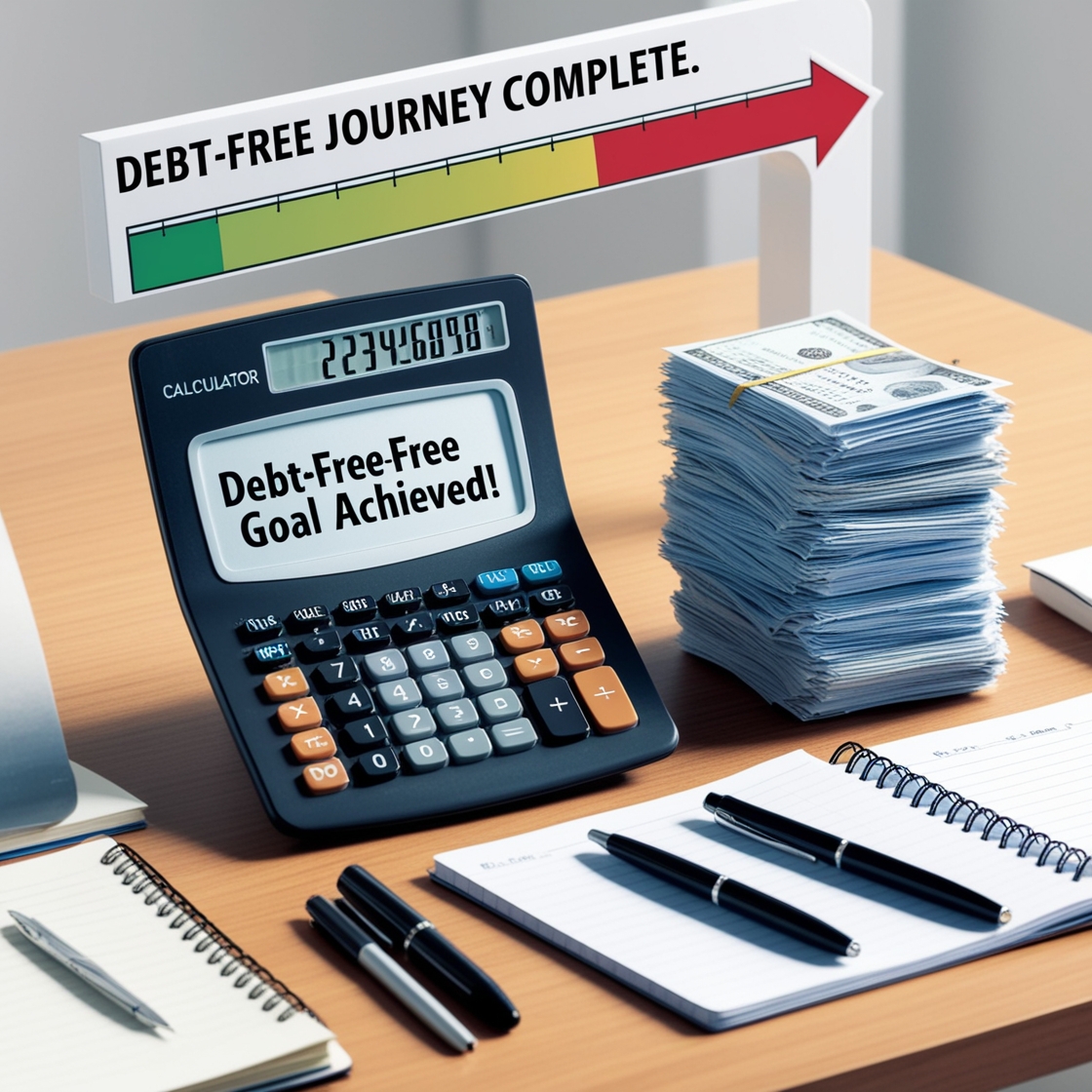Achieving debt freedom can seem like an uphill battle, but with the right strategy, it becomes a clear and manageable goal. This article delves into two highly effective debt repayment methods: the Debt Snowball Method and the Debt Avalanche Method. Each approach offers unique benefits tailored to different financial situations and psychological preferences.
The Debt Snowball Method emphasizes quick wins by targeting smaller debts first, building momentum and motivation as you eliminate balances one by one. On the other hand, the Debt Avalanche Method focuses on long-term savings by addressing high-interest debts first, helping to reduce the overall cost of repayment.
With practical tips, real-life success stories, and guidance on selecting the best method for your needs, this comprehensive guide empowers you to take control of your financial future. No matter where you are in your journey, the path to debt freedom starts with informed decisions and a commitment to staying on track.
Table of Contents
What Are the Debt Snowball and Avalanche Methods?
Both methods aim to eliminate debt systematically, but they differ in the approach to prioritizing which debts to pay off first:
- Debt Snowball Method: Focuses on paying off smaller debts first while maintaining minimum payments on larger debts.
- Debt Avalanche Method: Concentrates on debts with the highest interest rates, regardless of their balance size.
How the Debt Snowball Method Works
The Debt Snowball Method emphasizes psychological wins by quickly eliminating smaller debts, creating momentum as you tackle larger ones.
Steps to Implement the Debt Snowball Method:
- List Your Debts: Organize debts from smallest to largest balance, ignoring interest rates.
- Make Minimum Payments: Pay the minimum required on all debts except the smallest one.
- Target the Smallest Debt: Allocate extra funds toward paying off the smallest debt.
- Roll Over Payments: Once the smallest debt is cleared, move to the next smallest, adding the amount you were paying on the first debt.
Example:
- Credit Card A: $1,000 at 15% interest
- Credit Card B: $3,000 at 20% interest
- Personal Loan: $5,000 at 10% interest
Using the Debt Snowball Method, you’d tackle Credit Card A first, regardless of its interest rate, before moving on to larger debts.
How the Debt Avalanche Method Works
The Debt Avalanche Method focuses on minimizing the total interest paid by prioritizing high-interest debts.
Steps to Implement the Debt Avalanche Method:
- List Your Debts: Organize debts by interest rate, from highest to lowest.
- Make Minimum Payments: Ensure all debts receive their minimum payments.
- Target the Highest Interest Debt: Use any extra funds to pay off the debt with the highest interest rate.
- Roll Over Payments: After eliminating the highest interest debt, move to the next highest, continuing until all debts are cleared.
Example:
- Credit Card A: $1,000 at 15% interest
- Credit Card B: $3,000 at 20% interest
- Personal Loan: $5,000 at 10% interest
Here, you’d prioritize Credit Card B due to its 20% interest rate, even though its balance is higher.
Debt Snowball vs. Avalanche: Pros and Cons
Debt Snowball Method:
- Pros:
- Quick psychological wins keep you motivated.
- Simple and easy to follow.
- Cons:
- May cost more in interest over time compared to the Avalanche Method.
Debt Avalanche Method:
- Pros:
- Saves money on interest payments in the long run.
- More mathematically efficient.
- Cons:
- Can take longer to see results, making it harder to stay motivated.
Which Method Is Right for You?
The best method depends on your personality and financial goals:
- Choose Debt Snowball if you need quick wins to stay motivated.
- Choose Debt Avalanche if you’re more disciplined and focused on saving money over time.
Real-Life Success Stories: The Path to Debt Freedom
Debt Snowball Success:
Jessica, a dedicated teacher, found herself overwhelmed with $10,000 in debt spread across multiple accounts. She decided to implement the Debt Snowball Method by focusing on her smallest credit card balance first. The psychological boost she felt from that initial win was transformative. Motivated by her success, Jessica continued to tackle each subsequent debt with increased confidence and determination. Within three years, she achieved debt freedom, proving that small wins can lead to significant progress.
Debt Avalanche Success:
John, an engineer burdened with $20,000 in high-interest loans, took a different approach. Choosing the Debt Avalanche Method, he targeted his highest-interest debts first. While the initial progress felt slower compared to Jessica’s method, John’s commitment to minimizing interest paid off. Over five years, he not only cleared his debts but also saved over $5,000 in interest charges. His journey to debt freedom shows the power of focusing on long-term savings and financial efficiency.
Tools to Achieve Debt Freedom
The road to debt freedom becomes smoother with the right tools to guide your efforts:
- Budgeting Apps: Apps like Mint, YNAB (You Need a Budget), and EveryDollar can help you track your spending and monitor debt repayment progress.
- Debt Calculators: Online calculators are invaluable for visualizing potential savings with each method. They can show you the timeline to eliminate your debt and how much interest you’ll save.
- Customized Spreadsheets: Create a personalized debt-tracking spreadsheet to detail payments, remaining balances, and milestones. A visual representation of progress can keep you motivated.
Tips to Stay Committed to Debt Freedom
Achieving debt freedom requires consistent effort and commitment. Here are some practical tips to ensure you stay on track:
- Celebrate Small Wins: Each time you clear a balance, no matter how small, take a moment to celebrate your progress. Positive reinforcement helps maintain motivation.
- Automate Payments: Set up automatic payments to ensure you never miss due dates or minimum amounts. Automation removes stress and keeps your repayment plan on track.
- Cut Unnecessary Expenses: Evaluate your spending habits and identify areas to save, like dining out or subscription services. Redirect those funds toward debt repayment.
- Join Supportive Communities: Online forums and social media groups focused on debt repayment offer encouragement, advice, and accountability to keep you focused on your goals.
These inspiring stories, combined with practical tools and actionable tips, demonstrate that debt freedom is achievable for anyone committed to taking control of their finances. Whether you choose the Snowball or Avalanche Method, the most important step is starting the journey.

Breaking Down the Debt Cycle: How to Stay Out of Debt After Paying It Off
Paying off debt is a significant achievement, but staying out of debt is just as important. This additional section offers actionable advice to help you maintain financial freedom once you’ve reached your goal.
The Debt-Free Lifestyle: Key Strategies for Success
- Build a Comprehensive Emergency Fund
One of the leading causes of debt is unexpected expenses. Once you’re debt-free, focus on creating an emergency fund that can cover 3–6 months of living expenses. This fund acts as a financial cushion for unforeseen circumstances like medical bills, car repairs, or job loss. - Create and Stick to a Budget
Budgeting remains essential, even after you’re out of debt. Track your income and expenses using the 50/30/20 rule:- 50% for necessities (rent, utilities, groceries)
- 30% for discretionary spending (entertainment, travel)
- 20% for savings and investments
- Avoid Lifestyle Inflation
It’s tempting to upgrade your lifestyle after paying off debt, but this can lead to financial setbacks. Keep your expenses consistent and redirect the extra funds toward savings, investments, or other financial goals. - Use Credit Wisely
If you choose to use credit cards, pay off the balance in full each month to avoid interest charges. Set limits on discretionary spending to stay within your means. - Continue Educating Yourself
Financial literacy is an ongoing journey. Read personal finance books, listen to podcasts, or attend workshops to stay informed about effective money management practices.
Establishing Long-Term Goals
Staying out of debt often requires having clear long-term financial objectives. Consider the following:
- Retirement Savings: Contribute to a 401(k) or IRA to secure your future.
- Investing: Build wealth through diversified investments, such as stocks, bonds, or real estate.
- Paying It Forward: Use your financial freedom to help others, whether through charitable donations or sharing your debt-free strategies.
The Emotional Benefits of Staying Debt-Free
The benefits of being debt-free extend beyond financial stability. They include:
- Reduced Stress: No more worrying about due dates or interest rates.
- Increased Confidence: Financial independence allows you to pursue personal and professional goals with clarity.
- Better Relationships: Money is one of the leading causes of stress in relationships. Being debt-free fosters healthier communication and shared goals.
Conclusion: Your Path to Debt Freedom
Achieving debt freedom is not just a financial milestone but a life-changing accomplishment that brings peace of mind and greater control over your future. Whether you choose the Debt Snowball Method for its motivational momentum or the Debt Avalanche Method for its focus on interest savings, both strategies offer a structured, effective way to eliminate debt.
As you move forward, remember that the journey to debt freedom requires consistent effort, informed decisions, and a willingness to adapt as your financial situation evolves. Embrace tools like budgeting apps, debt calculators, and spreadsheets to stay on track, and don’t underestimate the power of small changes in spending habits.
Ultimately, the most important step is to start. By committing to a repayment strategy and staying focused on your goal, you can overcome financial challenges and achieve the lasting freedom and stability you deserve. Debt freedom is within your reach—take the first step today and claim your brighter financial future!





